Spring Research in the Arctic
2012-03-27
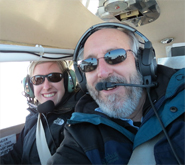
While some faculty and students head south during spring break to find warmer weather, members of the Shepson Research Group traveled to the Arctic to continue polar chemistry field studies.
Professor Paul Shepson, analytical and atmospheric chemistry researcher and chemistry department head, is spending the month of March 2012 in Barrow, Alaska, along with postdoctoral fellow Kerri Pratt and graduate student Kyle Custard, who have been there since mid-February.
The Purdue team is a part of an interdisciplinary research project funded by NASA called BROMEX (BRomine, Ozone, and Mercury EXperiment). The purpose of the field study is to investigate the halogen chemistry that occurs on and above the sea ice in the springtime that destroys lower tropospheric ozone and leads to deposition of atmospheric mercury to the sea ice and tundra. The study involves ground-, sea ice/buoy-, aircraft-, helicopter-, and satellite-based measurements to identify the impacts of Arctic sea ice loss on the troposphere.
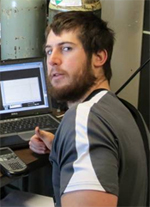
A major highlight of the campaign is Purdue’s Airborne Laboratory for Atmospheric Research (ALAR). Professor Shepson, accompanied by Purdue aviation mechanic Brian Stirm, piloted the twin-engine airplane on the 3100 mile, four day trip from West Lafayette to Barrow. Through collaboration with researchers at the University of Heidelberg in Germany, and Penn State, ALAR is outfitted with instruments to measure ozone, particles, and halogens in the atmosphere to gain insights into their vertical and horizontal distribution over the sea ice and tundra./p>
At a ground-based tundra site, Dr. Kerri Pratt and Kyle Custard are also measuring halogens (e.g. BrO, ClO, Cl2, Br2, HOBr and HOCl) in the air using a flow-tube method developed in the Shepson Lab, and a new chemical ionization mass spectrometer. Through snow chamber experiments funded by the NSF, they are also investigating the reactions of gases on snow and sea ice surfaces.

In addition to conducting research, Pratt and Custard have been maintaining a research blog and answering questions from K-12 students throughout North America, including eighth-grade science students at Lafayette Tecumseh Junior High School. The two researchers even hosted a field trip when a Barrow elementary third-grade class visited the research group’s Cake Eater Lab. The students learned about snow, meteorology, and air sampling, while having fun running around on the tundra!
BROMEX research is a collaboration with Purdue University; U.S. Army Cold Regions Research and Engineering Laboratory; University of Alaska at Fairbanks; University of Washington; NASA Jet Propulsion Laboratory; National Snow and Ice Data Center; NASA Goddard Space Flight Center; U.S. Naval Academy; Desert Research Institute; Environment Canada; University of Bremen, Germany; University of Hamburg, Germany; University of Heidelberg, Germany; Natural Environment Research Council, UK.
Dr. Kerri Pratt is supported by an NSF Postdoctoral Fellowship in Polar Regions Research. She is maintaining a BROMEX blogof the group's experiences in Barrow.
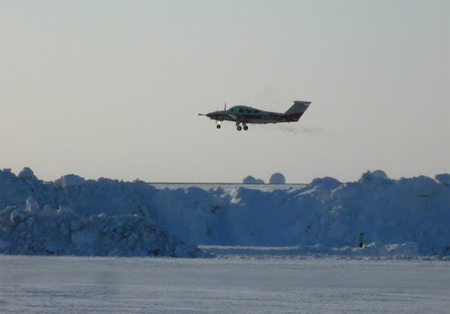
(Photo courtesy of graduate student Stephan General - Univ. of Heidelberg
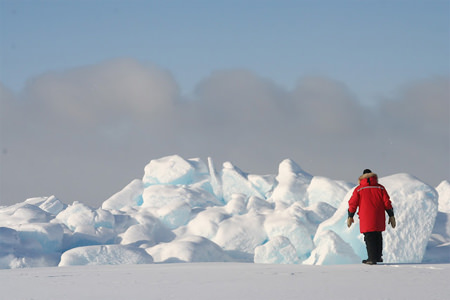
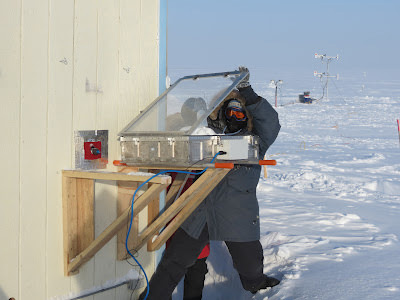
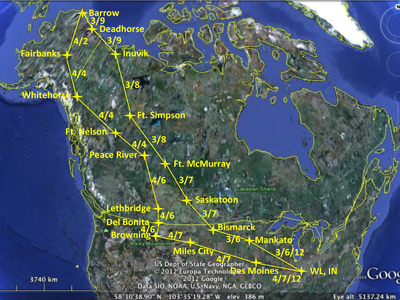
Related feature articles:
Purdue Today: Did you know?
Chilling out in Alaska, a scientist's dream comes true
Related links:
Shepson BROMEX Blog
Shepson Research Group Page
Dr. Kerri Pratt's research page
Source:
Chemistry Communications